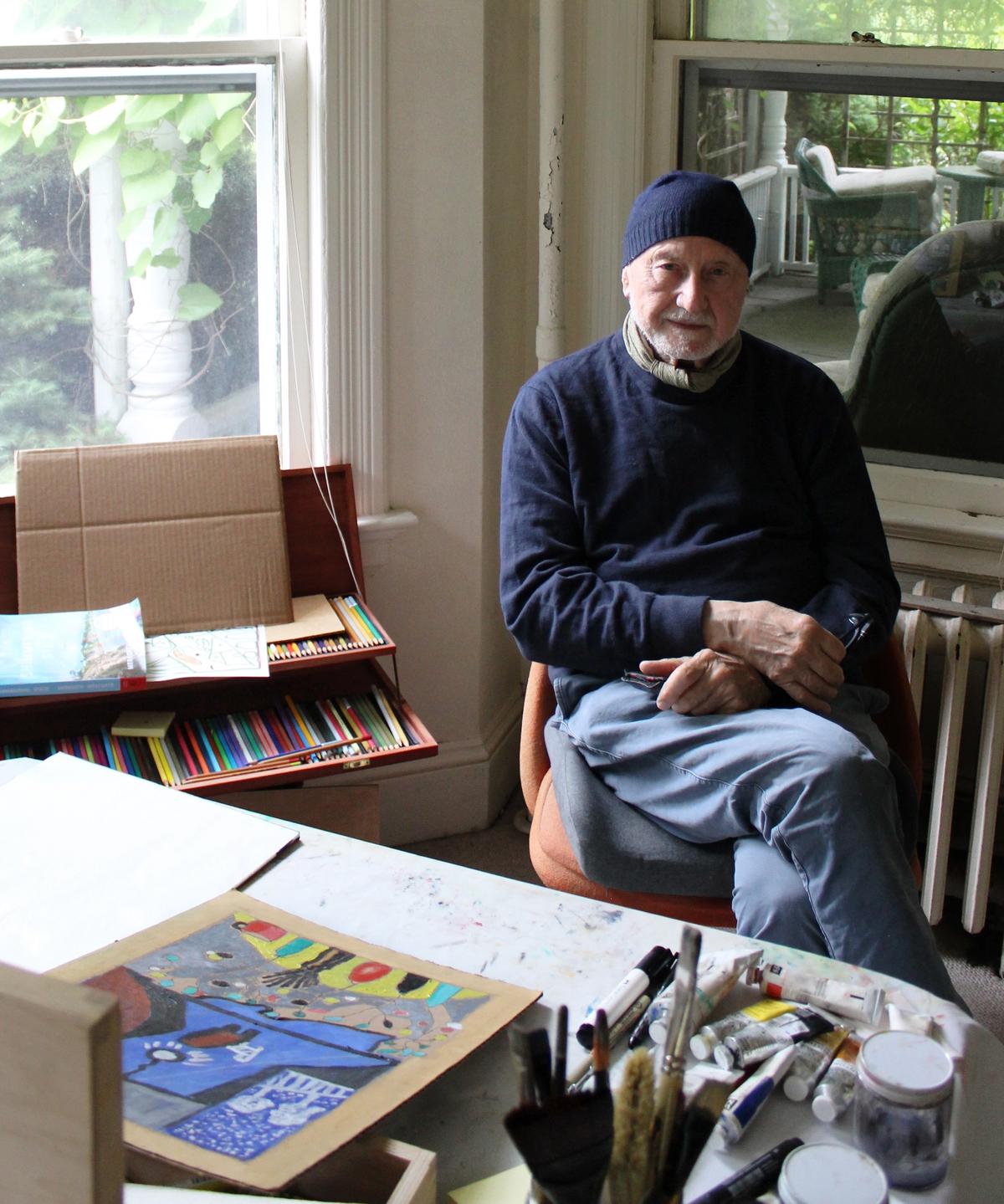Frederic Tuten has been a highly recognized figure in the art world for decades. Known as an award-winning author and art critic, his essays have included catalog pieces for John Baldessari, Ross Bleckner, and David Salle, among others. His fiction puts to use his in-depth knowledge of art history, often merging his characters with the psyches of painters like Poussin and Van Gogh. His prolificacy extends beyond the written word however, to an abstract narrative of colourful shapes on cardboard. Tuten has placed more focus on his visual work in recent years, resulting in a large body of drawings and paintings in his Hamptons home. On 26 June, his work will be on display for the first time at Harper’s Gallery in East Hampton, New York.
Tuten, who turns 85 this year, has long been a fine artist in his own right. His recent memoir, My Young Life, opens with an account of figure drawing at The Art Students League in the 1950s, and his Instagram has been populated almost exclusively with his artwork since he began publishing on the platform in 2013. He counts Hans Ulrich Obrist and David Salle among his supporters, but it was his close friend Roy Lichtenstein who initially championed his work. “I showed him my sketchbook twenty years ago,” Tuten says. “He said to me, ‘Fred this is beautiful’ and offered his advice. He would say to consider all surfaces, to use more or less pressure. It was a great lesson.”
The impact Lichtenstein’s early critiques had on Tuten are evident in his use of cardboard surfaces and line variations. Tuten’s reliance on instinct adds to the sincerity with which his dreamlike scenes play out in a primary palate. Objects relate to each other in a mischievous way, giving his work a playfulness that retains substance, a balance that requires a seasoned storyteller of Tuten’s caliber.
Harper Levine, owner of Harper’s Gallery, was immediately taken with Tuten’s work. “I quickly fell in love with his style,” Levine recalls. “It’s reminiscent of Matisse, while having a unique, primitive quality. And if you look at the totality of the show, it has a narrative that is easy to piece together.”
In addition to his show at Harper’s, a book featuring his artwork is forthcoming from Koenig, solidifying his place as not only a writer, but as a fine artist. When asked if this is a time of reinvention, Tuten shakes his head ‘no’ and replies: “I’m going back to the beginning.”
The show runs from 26 June -21 July.


